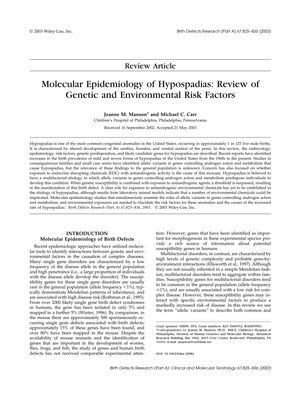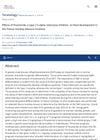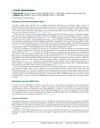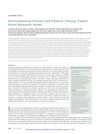Molecular Epidemiology of Hypospadias: Review of Genetic and Environmental Risk Factors
October 2003
in “
Birth Defects Research
”

TLDR Both genes and environmental factors like chemicals may contribute to the increase in hypospadias, but the exact causes are still unclear.
The 2003 document reviewed the increase in hypospadias cases in the United States since the 1960s and explored both genetic and environmental risk factors. Genetic studies pointed to variants in genes related to androgen action and metabolism, but their general relevance was unclear. Environmental factors, especially endocrine-disrupting chemicals (EDCs), were suspected in the rise of hypospadias, although a definitive link was not established. The condition's etiology was considered multifactorial, with genetic predisposition and antiandrogenic exposure potentially combining to exceed a threshold for the defect. The review emphasized the need for molecular epidemiology studies to better understand hypospadias risk factors. It also noted a higher frequency of hypospadias in first-born infants (1.9%) compared to others (0.9%), a higher occurrence of severe forms (35%), and a 50% increase in severe cases in children of mothers over 35. Parental subfertility, especially in fathers with hypospadias, and the use of assisted reproduction techniques like ICSI were associated with increased risk. Familial clustering suggested a strong genetic predisposition, with high heritability indices and the SRD5A2 gene mutation linked to the condition. Environmental concerns included the potential impact of maternal diet, such as vegetarianism and phytoestrogens, and weak evidence of adverse outcomes from pesticide exposure. The document called for improved methods to measure environmental exposures and pregnancy outcomes, and for studies examining both genetic susceptibility and environmental factors.







